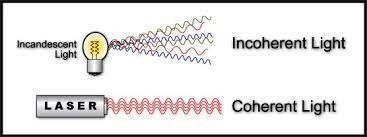Neuropathy Treatments in Greenville, SC WITH CLASS IV
LASER THERAPY
Will Class IV Laser Help Me?
Benefits Of Class IV Therapeutic Laser:
Enhanced Tissue Healing: Laser treatments enhance blood circulation and lymphatic drainage; release oxygen and nutrients from the bloodstream into the tissues and improve cellular metabolic activity to produce more cellular energy. With more energy available, damaged cells can repair and regenerate more quickly, and with better quality.
Accelerated Tissue Repair and Cell Growth: Photons of laser light penetrate deeply into tissue and accelerate cellular reproduction and growth. The laser light increases the energy available to the cell so that the cell can take on nutrients faster and get rid of waste products. As a result, the cells of tendons, ligaments, bone, nerves, and muscles are repaired faster.
Faster Wound Healing: Laser therapy stimulates fibroblast development (fibroblasts are the building blocks of collagen, which is predominant in wound healing) in damaged tissue. Collagen is the essential protein required to replace old tissue or to repair tissue injuries. As a result, laser therapy is effective on open wounds, scars, and burns.
Reduced Fibrous Scar Tissue Formation: Laser therapy reduces the formation of scar tissue following damage from cuts, scratches, burns or surgery by inducing production of more normal type-1 collagen. Scar tissue is the primary source of chronic pain. Laser treatments should be given as soon as possible after any acute injury to promote type-1 collagen production and parallel alignment of the collagen fibers.
Modulating Inflammation: Laser treatments modulate inflammation by causing vasodilation and activating the lymphatic drainage system. As a result, there is a reduction in swelling caused by bruising or inflammation. Try not to say that laser treatments are "anti-inflammatory", as they do not suppress inflammation as non-steroidal anti-inflammatory drugs (NSAIDs) do. Rather, Class IV laser therapy treatments help the body progress through the stages of inflammation more efficiently.
Analgesia: Laser therapy can reduce the firing of the C-pain fibers that transmit signals of "pain" from the cells to the brain. Increased blood circulation flushes away tissue irritants called "kinins". Pain modulating chemicals such as endorphins and enkephalins are released from the brain and adrenal gland. Increased cell membrane permeability encourages normal concentrations of ions across the cell membrane, and the resting potential of pain fibers is returned to -70 millivolts.
Improved Vascular Activity: Laser therapy will significantly increase the formation of new capillaries in damaged tissue that speeds up the heling process, closes wounds quickly and reduces scar tissue. Additional benefits include acceleration of angiogenesis, which causes temporary vasodilation, an increase inn the diameter of blood vessels. More blood flow equals faster healing and less pain.
Improved Nerve Function: Slow recovery of nerve functions in damaged tissue can result in numbness and impaired limbs. Laser therapy will speed up the process of nerve cell reconnection and increase the amplitude of action potentials to optimize muscle action.
Immune System Regulation: Laser therapy can both increase the local immune system response as well as have a positive effect on the whole-body immune response. Increased circulation and enhanced cellular energy production will enhance the activity of immune system cells, helping to reduce and fight infection.
Trigger Points and Acupressure Points: Laser therapy reduces muscle trigger points and stimulates acupuncture points on a non-invasive basis providing musculoskeletal pain relief.
Laser History and Science

Finally, laser light is monochromatic - it is of one wavelength or color (+/- a few nanometer due to diode production). It is this characteristic that is responsible for a laser's specificity and selective effect on tissue.
All lasers work in a similar manner. The following is a very simplified explanation. A medium of some sort is composed of atoms capable of reaching a metastable or "excited" state. This medium is charged by an external energy source that pumps the atoms to reach their excited state. When the atoms fall back to their stable state, they give off energy in the form of a photon of light. These photons are contained within a resonating chamber with mirrors on either end.
As the number of atoms in the excited stage increases, the chance of the photons emitted spontaneously hitting another atom in the excited stage to "stimulate" release of a similar photon increases dramatically. The resonating chamber amplifies this stimulation exponentially until laser light is produced. This light is then directed externally and guided to the target tissue.
Of course, this all take place virtually instantaneously. The chemical medium will dictate the wavelength of light that is produced, and the wavelength will dictate to what function this laser is best suited.
Laser light in the red and near-infarared spectrum has biostimulatory properties, meaning that is can reduce inflammation, provide analgesia, and most importantly, enhance repair/remodeling/regeneration of tissue. Wavelength between 600nm and 100nm are used in laser therapy. The shorter red wavelength are absorbed more superficially and therefore do not have the ability to penetrate as readily as the longer near-inarared wavelength. Wavelengths in the visible red range (650nm) are highly absorbed by melanin and other superficial receptors. These can enhance wound healing. They may also stimulate trigger points, acupuncture points, and/or cause release of secondary messengers that may improve other deep-seated conditions.
Absorption spectra data shows that the wavelengths near 980nm have moderate increased absorption by water. With the higher-powered lasers this can create some thermal gradients and increase circulation in these areas. It is also near the peak of the oxygenated hemoglobin dissociation curve. However, the 915nm wavelength is even closer tot he peak of the hemoglobin dissociation curve. Recent studies have indicated that this wavelength creates as much as a 30-50% increase in molecular oxygen (O2) release to the tissue over the 980nm wavelengths.
Different tissue types also seem to respond more efficiently to differing pulse rates. It may not be as simple as the rate but even the amount of time the laser is on vs. off could affect tissue response in a more positive manner. These are still being studied but current literature consistently shows that adding 3 pulse frequencies to your treatment protocols produces better results overall than just continuous wave (CW) delivery. Adjustable power and pulsing frequencies give you the versatility to treat a wider range of clinical conditions both superficial (dermatologic) and deep (musculoskeletal/neurologic); acute and chronic, and mild and severe.
Intense superpulse (ISP) is another laser delivery mode which aids in penetration and mitigating thermal and absorption effects of pigmented tissue. It is the laser's average power not "peak" power that determines dose delivery and therefore clinical effectiveness. The Horizon laser is operating at a 60% duty cycle in the ISP mode.
In ISP mode a therapeutic dosage can be delivered to deeper targets while minimizing superficial heating. As an example, you could run 12 watts CW on your arm, and compare that with ISP mode at 12 watts average - the ISP mode will feel slightly "cooler" due to the thermal relaxation time between pulses.
